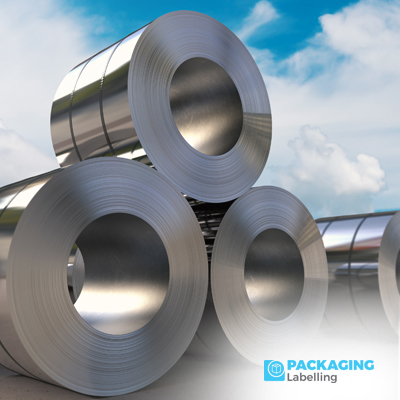Steel Strapping Solutions: Innovations in Packaging Technology

Introduction: The Evolution of Steel Strapping in Packaging
Steel strapping has long been a staple in the world of packaging, offering strength, durability, and reliability in securing heavy loads for transport and storage. Over the years, innovations in packaging technology have led to significant advancements in steel strapping solutions, revolutionizing the way products are packaged, shipped, and delivered. In this article, we will explore the latest innovations in steel strapping technology, their benefits, and applications across various industries, and the future outlook for this essential packaging solution.
Benefits of Steel Strapping
One of the primary reasons for the enduring popularity of steel strapping is its exceptional strength. Steel straps are capable of withstanding high tension and are resistant to damage from sharp edges or rough handling during transit. This strength makes them ideal for securing heavy or bulky items such as machinery, construction materials, and industrial equipment. Additionally, steel strapping is highly durable, ensuring that packaged goods remain intact and protected throughout the supply chain, reducing the risk of damage or loss.
Innovations in Steel Strapping Technology
Recent years have witnessed significant innovations in steel strapping technology, aimed at enhancing performance, efficiency, and sustainability. One such innovation is the development of high-tensile steel straps that offer superior strength while reducing the overall weight of packaging materials. These lightweight yet robust straps contribute to lower shipping costs and environmental benefits by reducing fuel consumption and carbon emissions during transportation.
Another notable advancement is the introduction of automated strapping systems that streamline the packaging process and improve productivity. These systems utilize cutting-edge technology such as robotics, sensors, and advanced software algorithms to accurately apply steel straps to packages of varying sizes and shapes. By automating the strapping process, companies can achieve faster turnaround times, lower labor costs, and consistent strapping quality, ensuring secure and reliable packaging solutions.
Applications across Industries
The versatility of steel strapping makes it a preferred choice across a wide range of industries. In the manufacturing sector, steel straps are used to secure raw materials, finished goods, and machinery components for shipment to customers or distribution centers. The construction industry relies on steel strapping to bundle and secure building materials such as pipes, lumber, and steel beams, ensuring safe and efficient handling on construction sites.
In the transportation and logistics sector, steel strapping plays a crucial role in palletizing and unitizing goods for efficient loading onto trucks, containers, and railcars. The agricultural industry utilizes steel strapping to package and transport bulk commodities such as hay, grains, and fertilizers, protecting them from damage during handling and storage. Moreover, steel strapping is widely used in the shipping and storage of hazardous materials due to its strength and reliability in containing potentially dangerous substances.
Environmental Considerations and Sustainability
While steel strapping offers numerous benefits in terms of strength and durability, there are also environmental considerations to be addressed. Traditional steel straps are made from non-renewable resources and require energy-intensive manufacturing processes. However, the industry has been actively exploring sustainable alternatives such as recycled steel strapping and bio-based materials derived from renewable sources.
Recycled steel strapping is produced from reclaimed steel scrap, reducing the demand for virgin steel and minimizing waste in landfills. This approach not only conserves natural resources but also reduces the carbon footprint associated with steel production. Additionally, advancements in bio-based materials have led to the development of strapping solutions made from plant-based polymers, offering a renewable and eco-friendly alternative to traditional steel straps.
Future Outlook and Trends
Looking ahead, the future of steel strapping technology is focused on continuous innovation, sustainability, and digital integration. Manufacturers are investing in research and development to create next-generation steel straps that are even lighter, stronger, and more environmentally friendly. This includes exploring advanced alloys, coatings, and composite materials that enhance performance while reducing material usage and waste.
Digitalization is also transforming the steel strapping industry, with the adoption of IoT-enabled strapping systems that provide real-time monitoring, data analytics, and predictive maintenance capabilities. These smart strapping solutions enable companies to optimize packaging processes, improve quality control, and track shipments more effectively, enhancing overall supply chain visibility and efficiency.
In conclusion, steel strapping continues to be a cornerstone of packaging technology, offering unmatched strength, durability, and reliability in securing goods for transportation and storage. With ongoing innovations in materials, automation, and sustainability, steel strapping solutions are poised to meet the evolving needs of industries worldwide, ensuring safe, efficient, and environmentally responsible packaging practices.









